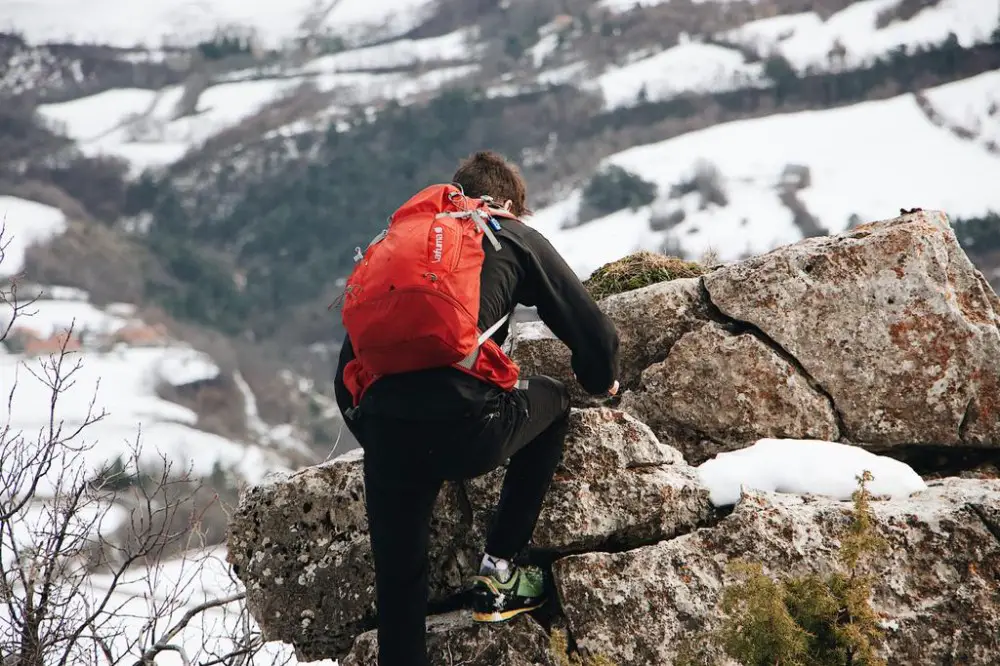When you are climbing mountains, hiking, driving, or doing any other activity at high altitudes, your body may not get enough oxygen. Lack of oxygen can cause altitude sickness.
Altitude sickness usually occurs at altitudes of 8,000 feet (2,500 meters) or higher. People who are not used to these heights are the most vulnerable. Symptoms include headache and insomnia. We should not take altitude sickness lightly. The condition can be dangerous. In addition, it is impossible to predict: anyone who is at high altitudes can contract it.
What is altitude sickness?
Altitude sickness, also known as mountain sickness, can occur if we travel at high altitudes. It can affect anyone: being young or physically fit does not lower your risk. The fact that we have this pathology or not may depend on:
- The height above sea level
- The time it takes to climb
- Whether or not we have any problems that affect the heart and lungs
Altitude sickness is classified into three groups:
- AMS . Acute Mountain Sickness (AMS) is considered the most common form of altitude sickness. The symptoms of AMS are very similar to being intoxicated.
- DOES . High-altitude cerebral edema (HACE) occurs if acute mountain sickness persists. HACE is a severe form of AMS where the brain swells and stops working normally. The symptoms of HACE resemble severe AMS, with the most notable being extreme sleepiness, confusion and irritability, and trouble walking. If not treated right away, HACE can cause death.
- HAPE . High-altitude pulmonary edema (HAPE) is a progression of HACE, but can also occur on its own. Excess fluid builds up in the lungs, making it difficult for them to function normally. Symptoms of HAPE are increased dyspnea on exertion,
severe cough and weakness. If HAPE is not treated immediately by lowering altitude or using oxygen, it can lead to death.
Key symptoms
The symptoms of altitude sickness can appear immediately or gradually. These include:
- Fatigue
- Insomnia
- Headache
- Nausea
- vomiting
- elevated heart rate
- Difficulty breathing (with or without exertion)
But there are also other signs that warn of something more serious:
- Skin discoloration (a change to blue, gray, or pale)
- Confusion
- Cough
- Coughing up bloody mucus
- Chest tightness
- decreased consciousness
- Inability to walk in a straight line
- Difficulty breathing at rest

Causes of altitude sickness
If the body does not acclimatize to high elevations, we can experience altitude sickness. As altitude increases, the air becomes thinner and less saturated with oxygen. This disease is more common at elevations above 2,500 meters. Twenty percent of hikers, skiers, and adventurers who travel to high elevations experience altitude sickness. The number increases to 50 percent at elevations above 5,500 meters.
There is usually a low risk if we have not had previous episodes. The risk is also low if we gradually increase the altitude. Taking more than two days to climb 2,5000 to 3,000 meters can help reduce risk. The risk increases if we have a history of altitude sickness or if we ascend quickly and climb more than 500 meters a day.
The doctor will ask us a series of questions to look for symptoms of altitude sickness. He will also listen to our chest with a stethoscope if we have difficulty breathing. Rattling or crackling sounds in the lungs may indicate that there is fluid in the lungs. This requires quick treatment. The doctor may also do a chest X-ray to look for signs of fluid or collapsed lung.
Treatment
Descending immediately can alleviate the first symptoms of altitude sickness. However, we should seek medical attention if we have advanced symptoms of acute mountain sickness.
The drug acetazolamide can reduce the symptoms of altitude sickness and help improve shortness of breath. We may also be given the steroid dexamethasone .
Other treatments include a lung inhaler , high blood pressure medication (nifedipine), and a phosphodiesterase inhibitor medication. These help reduce pressure on the arteries in the lungs. A ventilator can help if we can’t breathe on our own.
Possible complications
Complications of altitude sickness include:
- Pulmonary edema (fluid in the lungs)
- brain swelling
- Death
People with mild cases of altitude sickness will recover if treated quickly. Advanced cases of altitude sickness are more difficult to treat and require emergency care. People in this stage of altitude sickness are at risk of falling into a coma and dying due to brain swelling and the inability to breathe.
Can it be prevented?
It is recommended to know the symptoms of altitude sickness before ascending. We will never go to a higher altitude to sleep if we have symptoms. It is better to descend if the symptoms worsen while we are at rest. Staying well hydrated can lower your risk of developing altitude sickness. Additionally, we should minimize or avoid alcohol and caffeine, as both can contribute to dehydration.
If we plan to travel to high altitudes, we can talk to a doctor about medications that can help with acclimatization, especially if we have had altitude sickness before.
In summary, we can reduce the possibility of contracting altitude sickness by:
- Avoid rapid ascent from sea level: do not exceed 2,500 meters to sleep the first night
- Once we exceed 3,000 meters, do not ascend more than 500 meters a day
- Spend the night below the highest altitude of the day
- Avoid strenuous exercise before the body has had time to adjust to lower oxygen levels
- Avoid alcohol at high altitude
- Rest for 48 hours after arrival at a high-altitude location